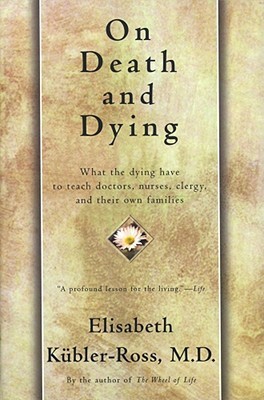On Death and Dying Book Summary
What the Dying Have to Teach Doctors, Nurses, Clergy and Their Own Families
TL;DR
Elisabeth Kübler-Ross's 'On Death and Dying' introduces the five stages of grief—denial, anger, bargaining, depression, and acceptance—drawing from her experiences with terminally ill patients to illuminate their emotional journeys and impact on families and caregivers.
What is On Death and Dying about
'On Death and Dying' is a seminal work by Dr. Elisabeth Kübler-Ross that delves into the psychological processes encountered by individuals facing death. Through interviews with terminally ill patients, Kübler-Ross identifies the five stages of grief—denial, anger, bargaining, depression, and acceptance—which serve as a framework for understanding how patients cope with their impending mortality. This book not only sheds light on the personal experiences of dying individuals but also offers valuable insights for medical professionals, clergy, and families about how best to support those in their final days. It has become a foundational text in the fields of psychology and palliative care since its publication in 1969.
On Death and Dying 5 Key Takeaways
Denial and Isolation
The first stage where patients may refuse to accept the reality of their situation, leading to withdrawal from social interactions and a sense of isolation.
Anger
Patients experience frustration and resentment towards their situation, often expressing anger at themselves, loved ones, or life in general.
Bargaining
In this stage, individuals may attempt to negotiate for an extended life, often in exchange for certain lifestyle changes or promises.
Depression
As the reality of death becomes more apparent, patients may enter a state of deep sadness and despair, reflecting on their lives and impending loss.
Acceptance
The final stage characterized by a sense of peace and acceptance of the inevitable, allowing individuals to confront their mortality with dignity.
Top On Death and Dying Quotes
- The most beautiful people we have known are those who have known defeat, known suffering, known struggle, known loss, and have found their way out of those depths.
- People are not afraid of death; they are afraid of the dying process.
- The denial, the anger, the bargaining, the depression, the acceptance—these stages are not linear; they can occur in any order, and often overlap.
Who should read On Death and Dying?
This book is ideal for healthcare professionals, students in the medical and psychological fields, clergy, and anyone seeking a deeper understanding of the dying process. It offers profound insights and practical guidance for caring for those facing terminal illness, fostering empathy and compassion in challenging circumstances.
On Death and Dying Best Reviews
- Kübler-Ross's groundbreaking work redefined the approach to terminal illness and grief, providing a compassionate framework that remains influential in both medical and psychological fields. - Journal of Palliative Medicine
- A profoundly moving exploration of the human condition that gives voice to the voiceless and empowers both the dying and their caregivers. - The New York Times
- This book is essential reading for anyone seeking to understand the emotional landscape of dying and the complexities of the human experience. - Psychotherapy Networker
People also liked these summaries
On Death and Dying FAQs
What is the purpose of 'On Death and Dying'?
The purpose of 'On Death and Dying' is to explore the emotional stages faced by dying individuals, providing insights that help families and caregivers support them during this challenging time.
How can the stages of grief assist caregivers?
Understanding the stages of grief helps caregivers to better empathize with their patients, allowing them to provide tailored support based on where the patient is in their emotional journey.
